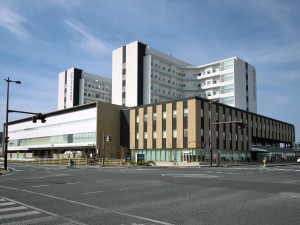Groundbreaking health devolution plans to give Greater Manchester and local NHS services much more control of the region’s £6 billion health and social care budget are well underway with the gathering of 37 different organisations – including hospital trusts, NHS England, the 10 councils and GP commissioners – now together to agree a collective way forward.
Ultimately this means compromise in the future between different bits of Greater Manchester. While councils there have been doing that to a greater or lesser degree for at least a decade, it will require a huge culture change for a system as notoriously complex as the NHS.
The aim is to better respond to local people’s needs, and to tap into their experience and expertise to influence spending plans, with a focus on preventing ill health and promoting healthy lifestyles, which is exactly the focus of local health systems throughout Japan with its mixture of private and public sector provision.
Japan’s health care system provides a variety of healthcare services, which includes screening examinations, prenatal care and infectious disease control, while the patient is responsible for 30% of these costs while the government pays the remaining 70%.
Medical services are paid for through a universal health care insurance system providing equality of access, and fees are set by government committee. All residents of Japan are required by law to have coverage. People without insurance from employers can participate in a national health insurance programme, administered by local governments. Patients have free choice to select doctors or facilities and coverage cannot be denied. Hospitals must be operated as non-profit as well as be under doctors’ management by law. Private sector companies are not allowed to own or operate hospitals for a profit. Clinics must also be operated and owned by physicians.
Local authorities in Japan will often set up their own hospitals, establishing them as ‘regional independent corporate bodies’ (chihō dokuritsu gyōsei hōjin). This is the case of Okayama Citizens Hospital, managed by Okayama City General Medical Centre, an arm’s length agency of Okayama City Government, and is one example of the various healthcare facility arrangements by local authorities in Japan. The city government, as with all Japanese local authorities, has a duty to implement public health legislation but does not have to do it directly. Regional independent corporate bodies are established by city governments to provide services not available when left alone to the private sector.
With the aim of carrying out local health care provision more efficiently and effectively, the arms length body has a different corporate personality from the city, although it is established by 100% investment from the city. It is a public hospital set up by the municipality (created by the resolution of the city council), and is still a public medical services hospital, best understood as an arm’s length corporation replacing direct management by the city.
In Okayama City, the Okayama Prefectural Psychiatric Medical Center, Okayama Medical Center and Okayama Roru Hospital have all shifted to independent corporate operations on the same model while still being 100% funded by the local authority.
Profitability would often be a question for the private sector but as a local independent administrative agency and still a “municipal hospital” financed solely by municipal funding, the city bears the expenses for necessary medical treatment even where there is no profit such as with emergency and infectious diseases, as well supporting the regional medical network to provide ‘medical care without hesitation’.
Okayama Citizens Hospital itself, transferred into the regional independent corporate body structure in 2014, provides emergency room facilities and is a teaching hospital training medical staff, implementing policies for dealing with natural disasters and has a role in ensuring blanket care throughout the region and supporting the wider healthcare network.
Japan’s citizens are historically among the world’s healthiest, living longer than those of any other country. Infant mortality rates are low, and Japan scores well on public-health metrics while consistently spending less on health care as a percentage of GDP but with better outcomes than other developed countries.
For a long time, demand for medical treatment was naturally dampened by the good health of Japan’s population, partly a result of factors outside the system’s control, such as the country’s traditionally healthy diet. Yet rates of obesity and diabetes are increasing as people eat more western-style food, and the system is being further strained by a rapidly raging population: already 21 per cent of Japan’s citizens are 65 or older, and by 2050 almost 40 per cent may be in that age group. Furthermore, advances in treatment are increasing the cost of care, and the system’s funding mechanisms struggle to cope.
Despite this changing background, health care in Japan is decentralised and local needs are tended for at the local level by practitioners who are able to apply resources on the basis of local needs, and in terms of outcomes in relation to the costs of healthcare, Japan still ranks very highly compared to other health systems in other countries.
Picture courtesy of Phonimoi via Wikimedia Commons, used under Attribution-Share Alike 3.0 Unported (CC BY-SA 3.0) licence


